The Corrupt World of Jak II
How a trip down memory lane led to an examination of the dangers of absolute power in Haven City
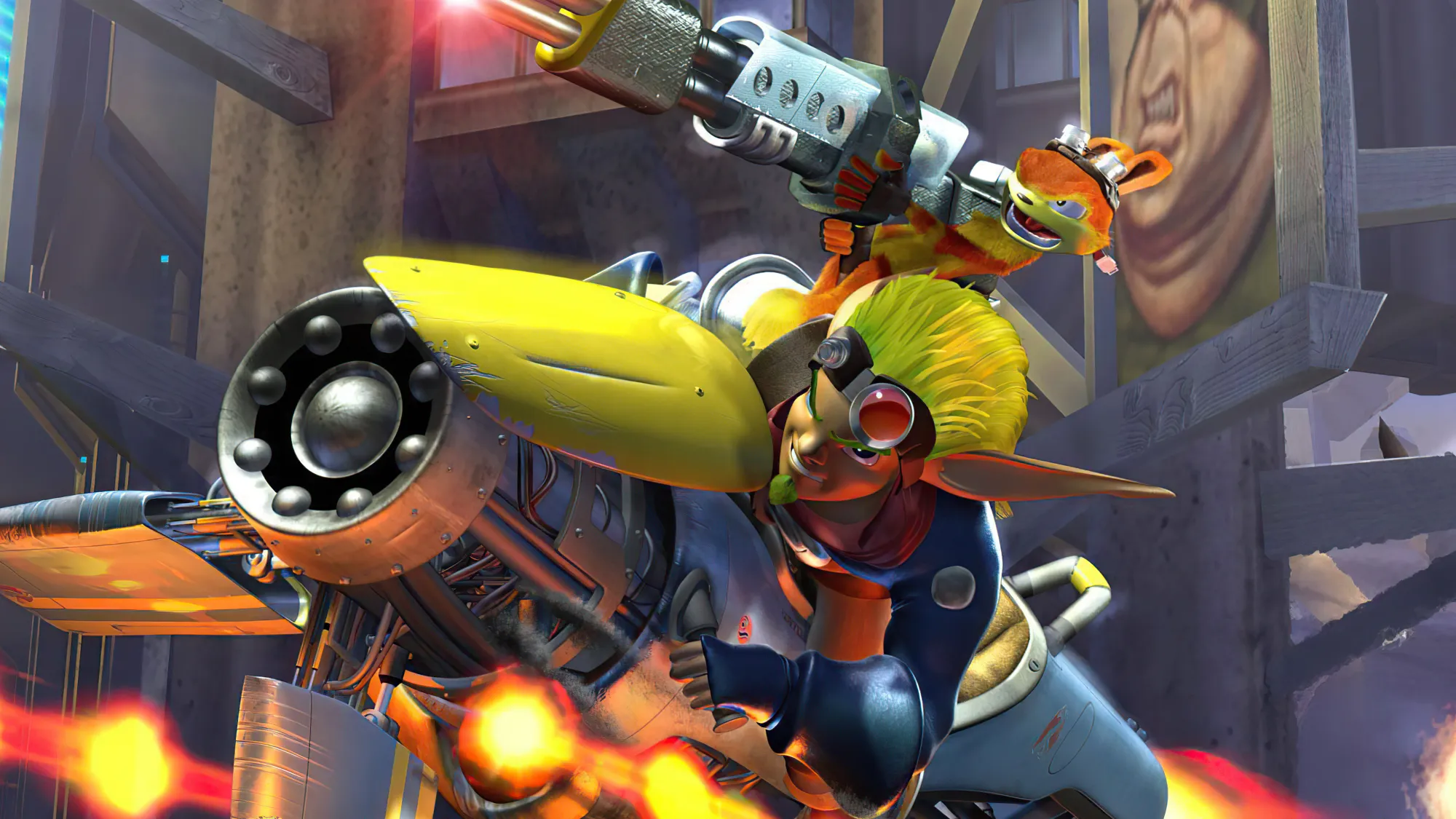
It’s been decades since I found myself slingshotted out of the idyllic Sandover Village and thrown at the mercy of Haven City. The Jak and Daxter series took a sharp turn in both genre and tone through Jak II. The earthy aroma that clung onto Samos’ hut became replaced with a boiled cabbage and rotting garbage odor. Jak and Daxter’s bright cartoon-y origins found itself transformed when its heroic cast traversed through a warp gate into a dystopian nightmare. Despite the game’s jarring introduction, the shift was digestible — fluid even, following in lockstep with the well-known Hero’s Journey.
What truly makes this game special for me, however, is the nostalgia. The somber set of strings that fill the backdrop of Haven City as you explore, hearing the canned “I hate the smell of this part of the city” from a stocky Krimzon Guard.
Up to 2003, myself and my brother never viewed the games we engaged with as a medium of conveying a complex, dark story… until we plucked Jak II from the local Blockbuster. This gritty game shook our gaming world and perspectives, hooking itself deep into our memories. The hours spent replaying, the effortless quoting and reenactment of scenes, and the devouring of the strategy guide for bits of lore and concept art until its pages softened and faded from the love and attention…
Seeing Jak II free to download under PlayStation Plus, I felt the pull to return to Haven City. While the graphics and controls can be rough compared to today's standards, its shocking transition from innocent roots to its corrupt metal infrastructure still carries the same emotional punch. Jak’s rage and single-mindedness are understandable, along with the palpable frustration of the disenfranchised living in this segmented city. As an adult, I found a new appreciation of the grimy world that emulates the concerns and corruption found in notable works of literature, such as George Orwell’s 1984. Despite its similar themes and dystopian backdrop, Jak II still remains one of a kind.
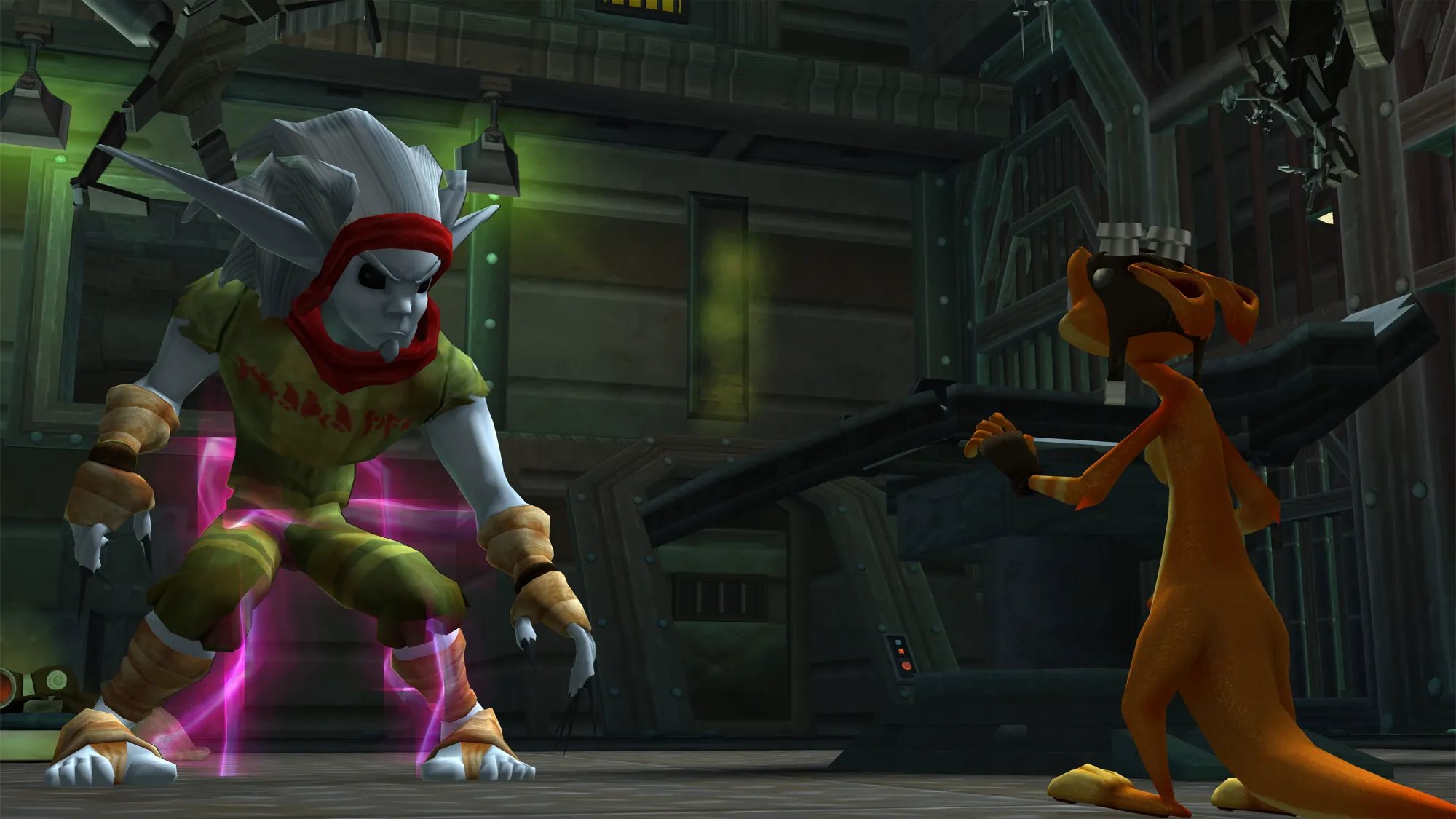
The Real Monsters are Human
Metalheads, dangerous and highly intelligent creatures with metallic exoskeletons, threaten Haven City. Only its walls of steel and concrete and the Krimzon Guards stand between these creatures and the populace. The Metalhead War is ongoing in the Jak II setting, taking over the outskirts of the city and, at times, its inner parts. Baron Praxis, voiced by Clancy Brown, presents himself as the defender of the city and the people, making grand strides in preventing these vicious enemies from conquering the city.
This heroic visage of the Baron may have been believable for players if it wasn’t for being exposed to Praxis' 'hospitality' within his prison.
In an attempt to gain the upper hand on the Metalheads, Praxis has been performing experiments with Dark Eco (a highly volatile form of eco), unofficially known as the Dark Warrior Program. The goal is to create an army of eco-powered soldiers to combat the Metalheads. These experiments take place in the bowels of the prison, flanked by numerous of cages, speaking volumes of how many have fallen (and could still fall) victim to the Baron’s unchecked ambition. There, strapped down, is our hero. Older. Exhausted. Different. When Daxter — Jak's best friend — arrives with wisecracks, it's overshadowed by the wrath pouring out of Jak. Tainted with dark eco and fixated on revenge, the once mute, innocent hero is now only recognizable by his mane of green hair.
Whatever persuasive hold the Baron may have had on players is gone with this scene. He permanently changed our beloved hero. He’s the clear enemy, but not all of Haven City sees it as so. The Baron has gone to great lengths to cultivate a specific persona to help him in maintaining order within the city.
The Baron's messaging can be heard in almost every corner of Haven City. Bearing a hologram of his emblem — that will turn and follow you — the city's speakers emit an endless loop of gaslighting, disinformation, and cruel reminders in Clancy Brown’s deep, commanding timbre: “Follow me into a safer future!”, “The city is safe. I will not allow harm to befall you”, “Sacrifice is something you should do for your city,” to “Remember, even friends might be enemies.”
As you move about Haven City, it’s easy to allow his words to become one with the soundtrack of the world. Listen closely to Praxis' words and their outrageousness will amaze you. Naughty Dog writers were not aiming for subtlety. Ministry of Extreme Labor? Baron Eco Fund that supports a variety of "humanitarian needs", such as "bombs, guns, armor, [and] genetic alteration research"? Or how about a spontaneous bulldozing of homes to "revitalize" the city?
Yet no one blinks in surprise. The populace digest the rhetoric because what other choice is there?
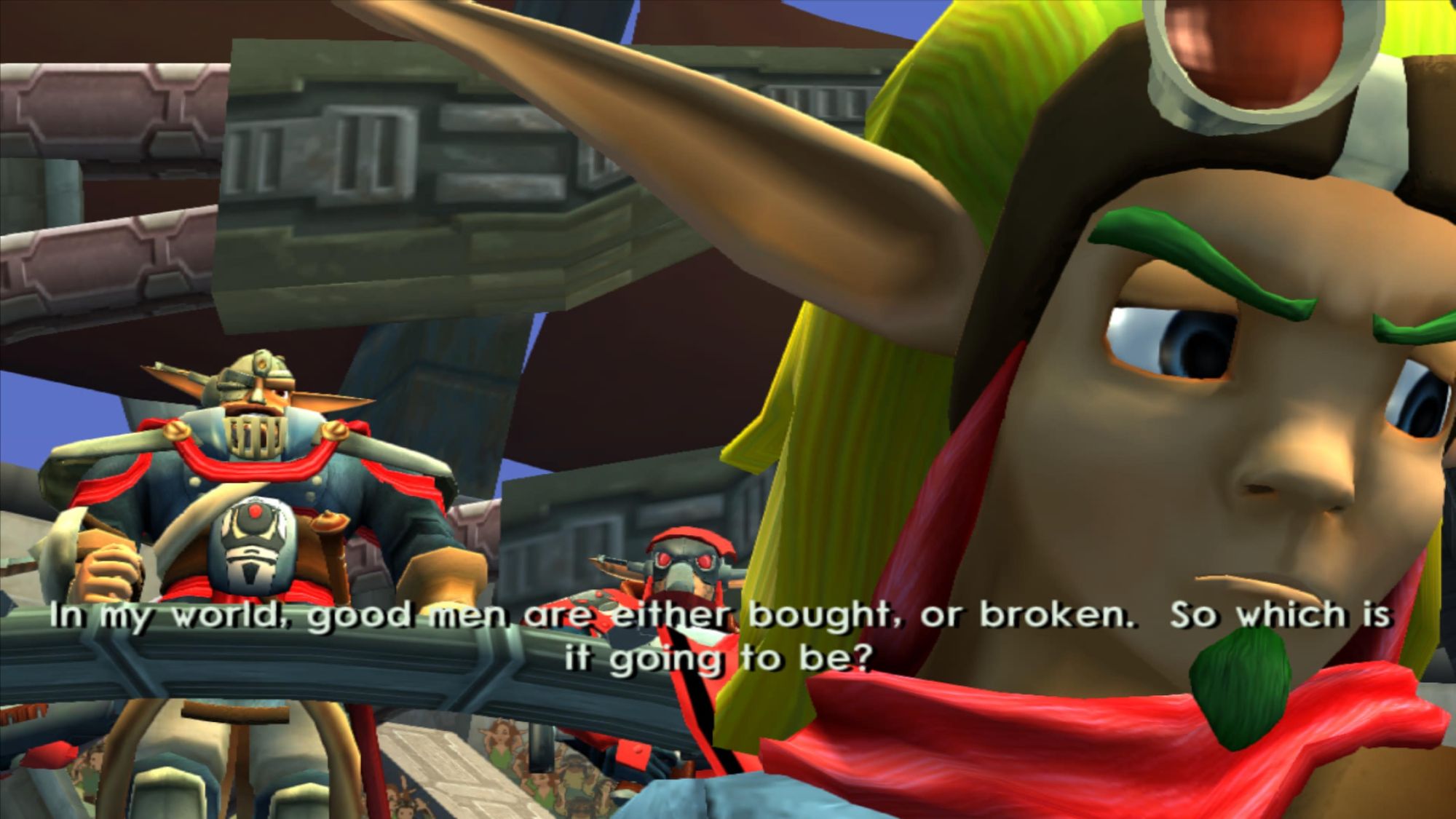
What makes Praxis more terrifying than the first game’s antagonists — Gol, Maia, and the Lurkers horde — is how human and recognizable he is.
He is a representation of corrupt individuals who exploit people, cities, and countries in a state of distress. In Jak II, the source of said distress being the Metalheads. The Metalheads certainly are terrifying and monstrous, which the Baron uses to his advantage. This is an enemy he can shock the populace with in order to keep them in line. It's an enemy he can attempt to bribe in order to create the facade of a 'winning', but continuous war.
It led to me reflecting on the Two Minutes of Hate from 1984, which saw the citizens of Oceania weep, scream, and rage against the image of their government's opponents. It’s constant. Recurring. Everywhere. Just like the messaging regarding the dangers of the Metalheads. The irony in Orwell's Two Minutes of Hate and the Baron's messaging is that both showcase how they wield power over the people.
One moment it is vicious vitriol, the next it’s roaring patriotism. Join the Krimzon Guards! Baron Praxis is here to keep you safe! “Your family will be allowed to stay” if you join the Baron’s military force. Be grateful for the Krimzon Guards.
The Krimzon Guards present as the indoctrinated and the favored, their loyalty to the Baron and his rules leading to a more secure life within Haven City for themselves. They follow his ruthless policies without hesitation and often use their authority to harm others. Even the Baron himself has taken note of it, but only to point out how stressful it is to run a city.
"Sure there are occasional complaints about [the Krimzon Guard's] over-aggressive policing, wanton destruction of people's property during raids, mass arrest, misplaced loved ones and whatnot. Hey, we're only human!" - Baron Praxis
This helps explain the Underground Movement's small and restricted size. The Baron's disloyal subjects face either jail, death, or exile (which is explored in Jak 3). There are even rewards in place for those who turn in anyone associated with the Underground. Torn — a Krimzon Guard who left the force and coordinates the rebel front — is the only strange outlier to this formula. How he’s kept his head on his shoulders continues to be a hot topic of discussion within the fandom. Did Torn initially spy for the Baron and then had a change of heart? Is he the spy Erol alluded to in the Palace? How is it Torn is alive after the Baron confronted him and forced him to share key Underground info?
Who can say, but it is Jak joining the fray that tips the scales in the Underground's favor. Jak helps the movement progress in the fight against the Baron’s authoritarian rule.
It’s ironic, if not tragic, to watch Jak use his new dark powers to combat the Baron. The holier-than-thou Precursor entities even give out an insidious message to Jak throughout the game, suggesting he no longer can be the hero in this story because of the dark eco warping him. He’s nothing more than a weapon. Jak bitterly embraces the role, resulting in a battle between corrupt rule and corrupt energy.
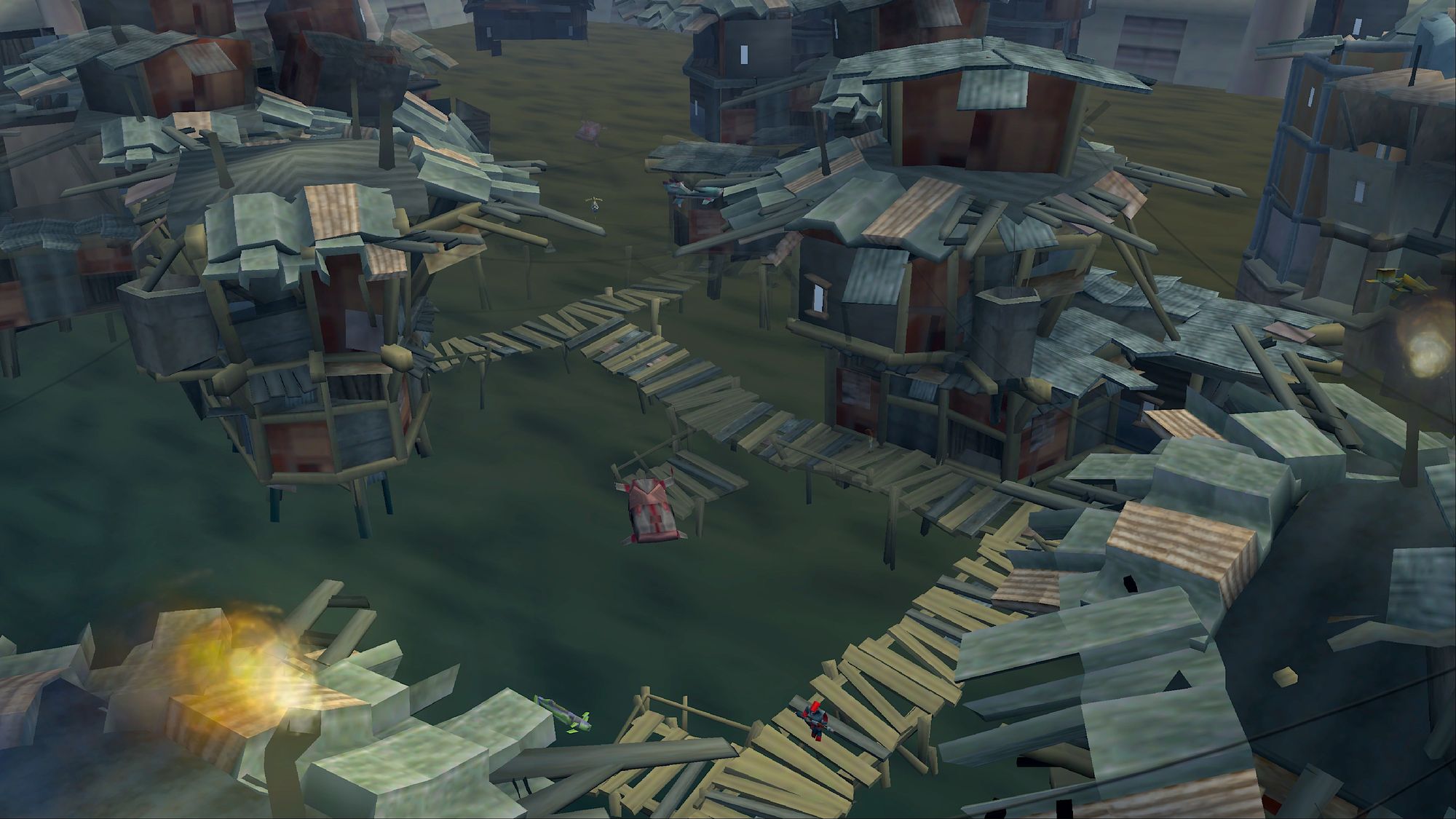
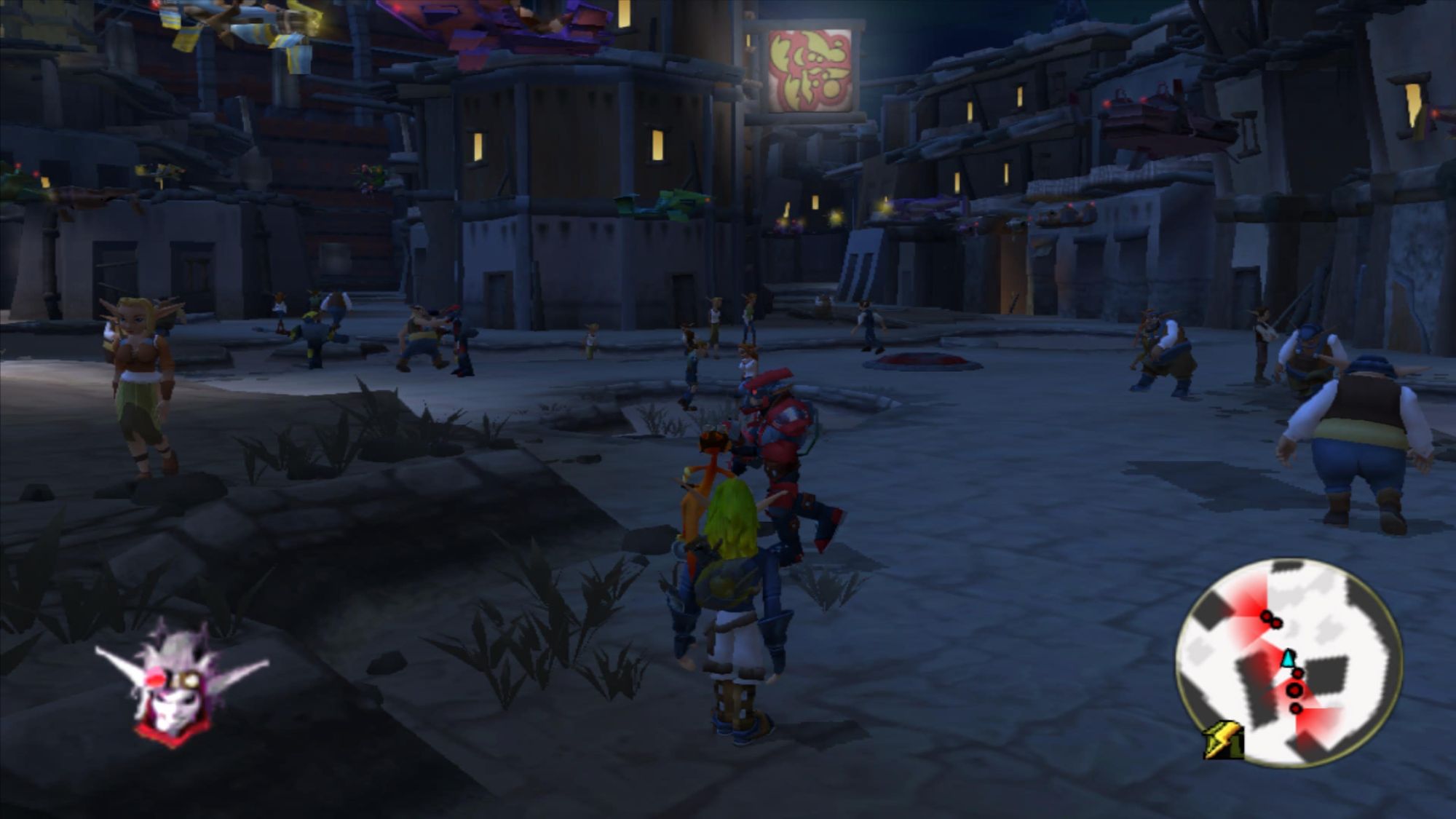
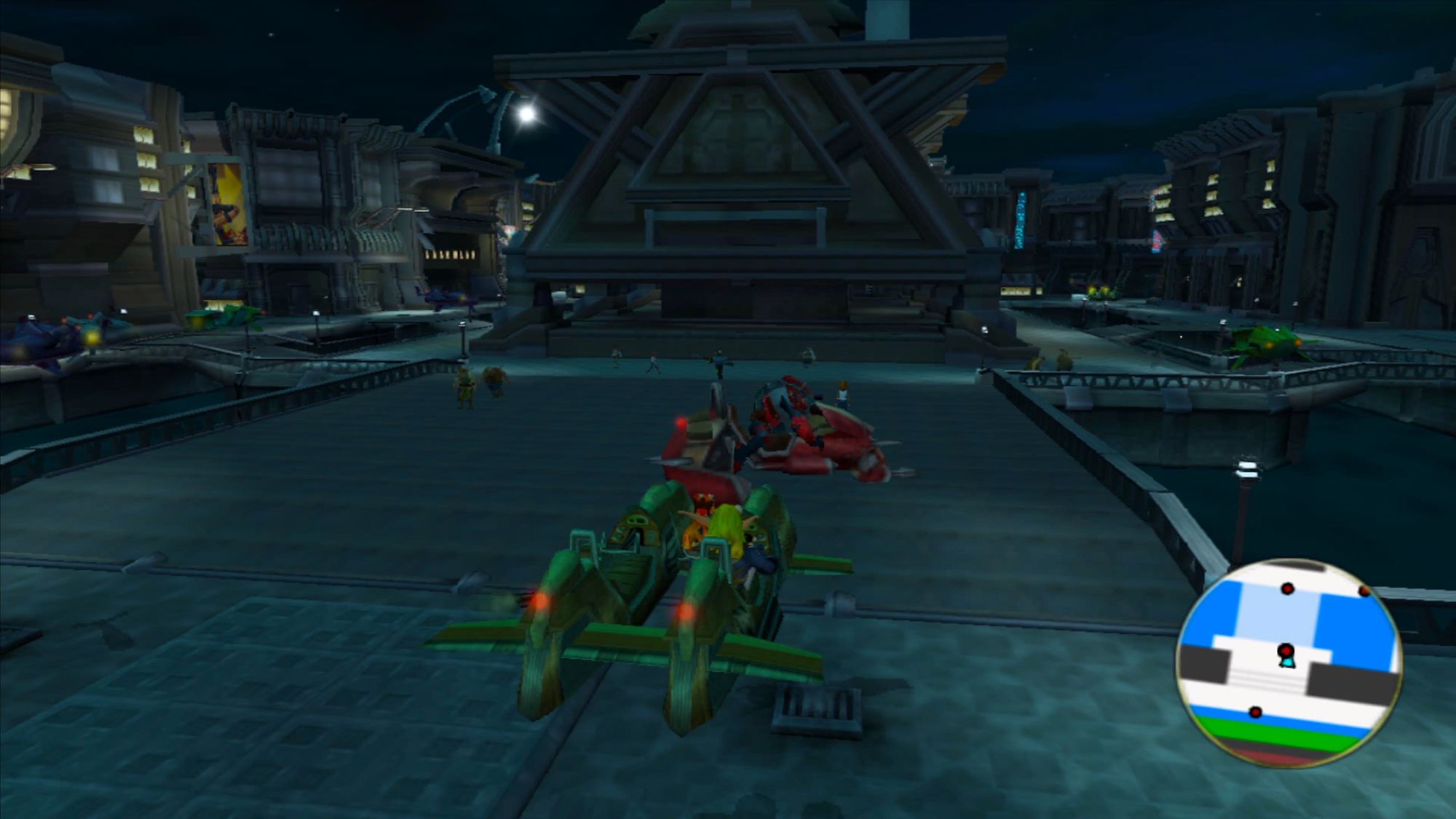
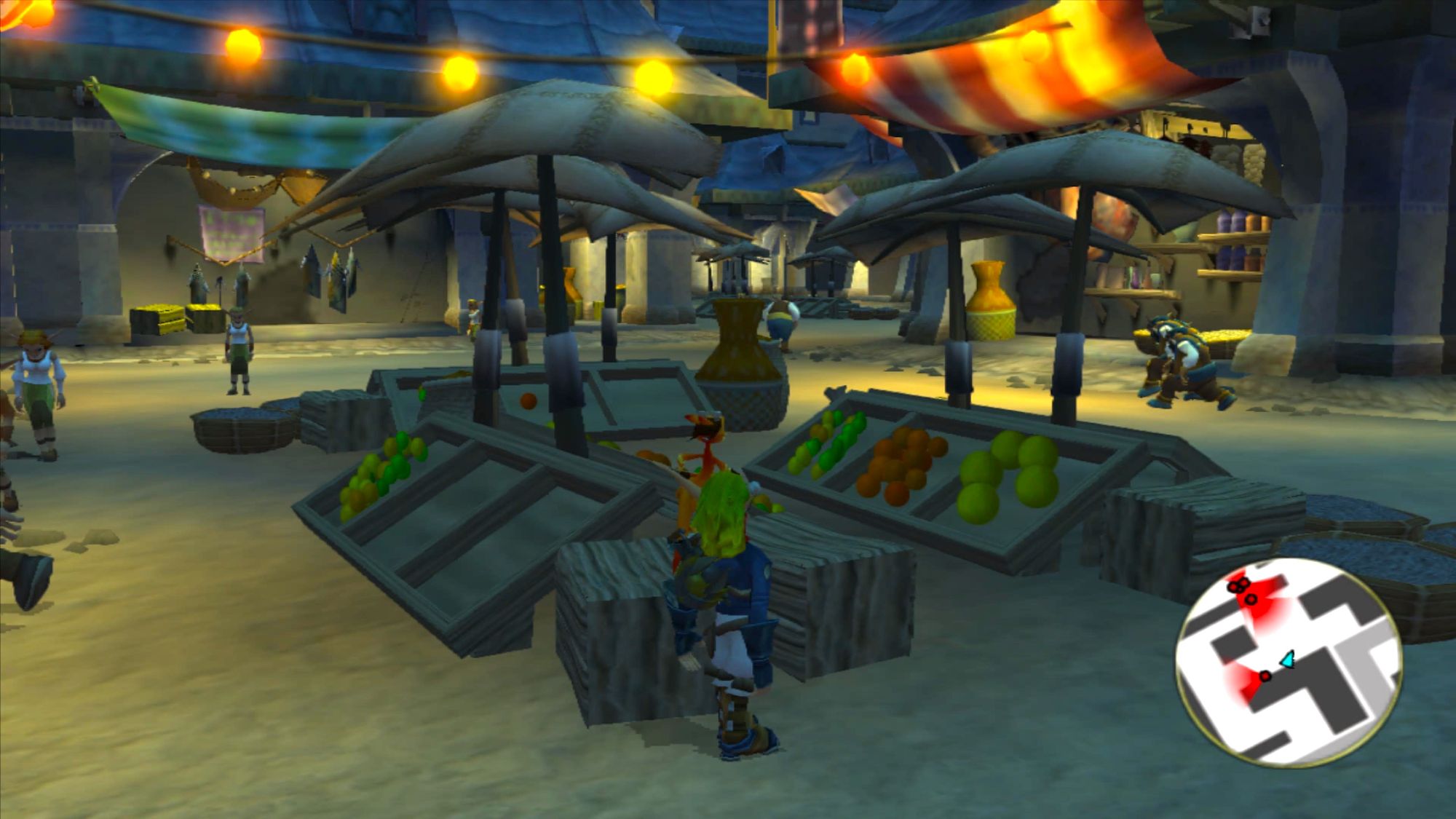
How To Divide and Conquer a City
One of the neatest concepts present with this dystopian world is the existence of energized barriers that divide the city into sectors. It serves a dual purpose: to keep players in one area until the story has advanced to a certain point and to illustrate to the viewers an inaccessible city. The city is made up of various sectors, including The Slums, Industrial Section, The Ports, Bazaar/Gardens, and the Main Town. To enter the other sectors of the city, you must have a special pass (which is difficult to come by). Without it, you’re stuck. A good portion of the game has us confined to the Slums and Industrial Section.
I couldn’t help but dive deep into the concept of control and inaccessibility. From his towering fortress, the Baron rules the city and its citizens, who are prisoners in their own sectors — appearing more and more like animal pens.
The Slums, a neglected area with derelict buildings and malfunctioning pipes, are squirreled away in one corner of the map. It's an unbearable maze to navigate, with its overwhelming traffic and broken roads. It’s here your hovercraft can ingloriously explode when it dips into a pothole (yes, potholes!). Those who have been denied their rights, as well as the Underground movement, live here and often endure the Baron’s unreasonable policies and military strength.
To give an example, the Baron switched off the water in the Slums in an effort to root out the Underground. A terrifying game has begun, the Baron understanding vividly that the Underground needs the safety and support of the disenfranchised in order to be successful. To spread about that the Underground is the supposed cause behind the water shortage in the Slums and the water will return if they simply give up… This can only cause inner turmoil within the resistance effort. It's a battle the Underground cannot win on their own.
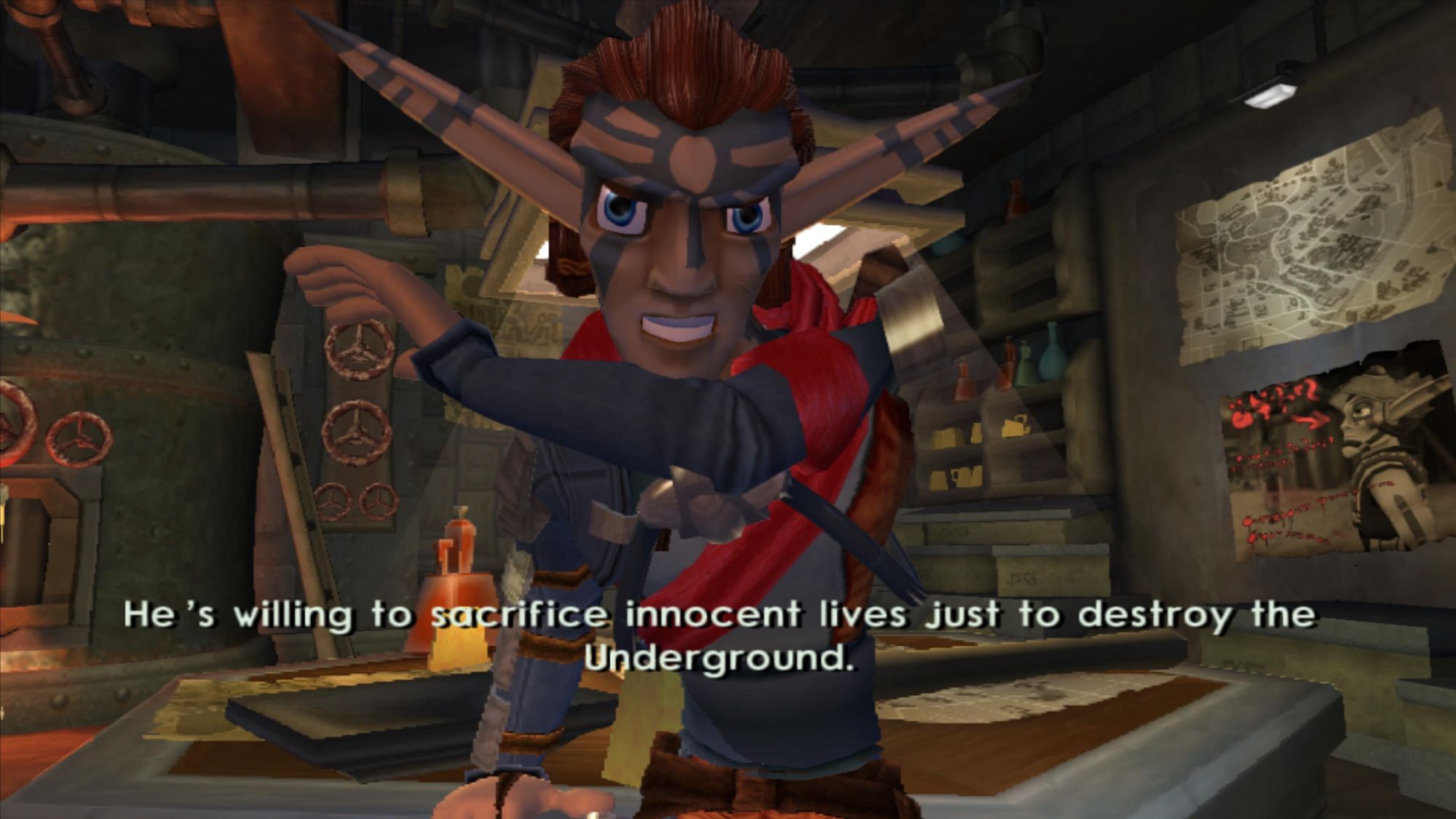
Another example of the Baron ruthlessly squeezing the life out of the Slums is the rise of military presence within the sector. A mission that struck me as wildly over-the-top was the sending out of blast bots (bots that can shoot out lasers and will explode when triggered or when attacked) to destroy the Underground’s Hideout. People were mercilessly attacked and crushed while the bots carelessly moved around. The Baron's attempts to keep a firm grip on power frequently lead to the Slums' inhabitants becoming helpless victims.
One would think news of these events would spread like wildfire, but they never do. The Baron's social divisions — a city divided into isolated sectors — make sure that the torments of the Slums stay in the Slums.
To no one’s surprise, the sectors closer to the Baron’s Palace are more aesthetically appealing (no potholes!), brimming with greenery, and cleaner. These sectors are not nearly as cluttered with the Baron’s propaganda platforms or congested with traffic.
Charm, Despite the Grime
Despite the shift in tone from the series’ roots, Jak II never lost sight of what made players originally fall in love with our heroic duo. Really, it’s all thanks to Max Casella, the voice behind Daxter. The witty one-liners, the comedic delivery, and just his orange-y presence adds life to this gray-scaled world. As Jak becomes fleshed out in this cruel city, Daxter is a reliable guide for players and Jak — a reminder of the lighter world we just departed from.
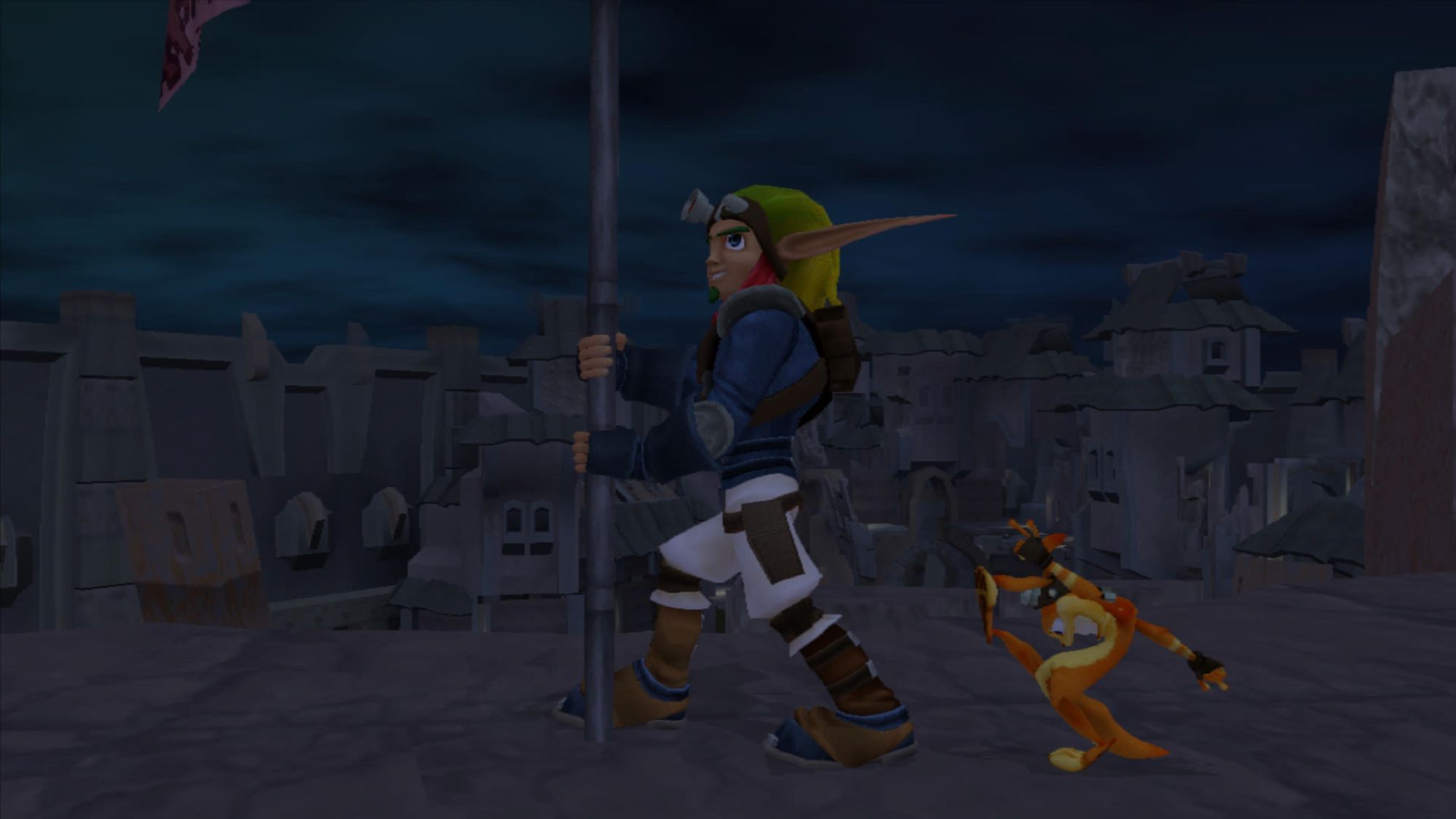
Even though Daxter is often scared and overwhelmed by the challenges they face, he unfailingly supports Jak. His friendship and loyalty to Jak continues to withstand the test of time and terrifying foes. It’s often in Jak II that Daxter acts as a sounding board for Jak’s thoughts. Consumed with revenge against Baron Praxis and prone to acting without thinking, it’s Daxter who steps in and encourages Jak to think more strategically...or to high tail it out of there.
Daxter’s presence helps Jak remember the compassionate person he once was, providing a contrast to the hard, callous exterior he now wears. It’s through Daxter do we see bits and pieces of the old Jak. They’ll laugh at each other’s mishaps and engage in victorious poses, The Precursor Legacy’s fanfare playing in the background.
In my opinion, Daxter plays a crucial role in Jak’s transformation into the hero he becomes in the later part of the game. Jak comes to terms with his darker side and becomes committed to a cause, willing to do whatever it takes to achieve it. In a 2005 interview, Creative Director Daniel Arey brilliantly captures the contrast between Jak and Daxter as heroes, stating that “Jak is the hero you aspire to be, while Daxter is the hero you fear you might be.” Nevertheless, it is when they work together that they achieve true success, with Jak’s bold approach to danger complemented by Daxter’s concern and willingness to take shortcuts.
I would further argue that Daxter's presence goes beyond just supporting Jak’s heroism; he actually adds a lightness and humor to the game’s otherwise gritty world. Through his witty comments, fascination with the city’s seedy underbelly, and knack for finding himself in... awkward situations, Daxter makes Haven City more enjoyable for players.
Final Thoughts
Jak II continues to stand the test of time through its exploration of adult themes, a dystopian world, and its diverse cast that fills and gives life to this grimy world. The game uniquely plunges both players and our beloved duo into a hostile world where not all enemies look like monsters. There are numerous of articles sharing how Jak II was another game signalling a shift in the gaming industry — a pursuit of real worlds and darker storylines. For myself, this game marked a moment where I truly took notice of all the bits and pieces that make up a video game.
Honestly, I was concerned that nostalgia would be a double-edged sword when I revisited Jak II. I worried that it wouldn’t bring me the same comfort and fascination it did decades ago or that its humor and world would have gone stale. But to my pleasant surprise, the game did not disappoint. While I found comfort in the familiarity of the racing track shortcuts and destroying the wares in the Bazaar, the dialogue I had missed or didn’t understand when I was younger absolutely thrilled me. More complex themes I couldn’t comprehend as a pre-teen now resonated with me, and I admired how well the storyline and environment conveyed them. The richness of the world and its storytelling stood out to me more than ever.
With a sense of nostalgia and a newfound appreciation for this old favorite, I cannot wait to revisit Haven City once more and dig deeper into the Jak and Daxter series.
